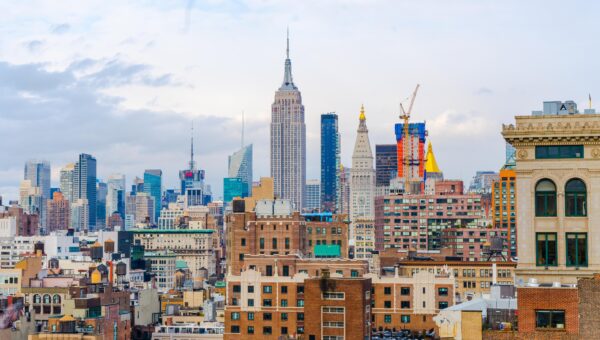
Capalino SVP Fred Kreizman: Communication is the Key to Success in Development
Written by Fred Kreizman, Senior Vice President, Capalino
The “City That Never Sleeps” is blessed with a construction boom that facilitates the economic well-being of the City. According to the US Department of Labor, employment in the construction industry has steadily increased in NYC since 2010. The City looks for developers to help enable a number of public benefits, from creating higher paying jobs, to providing opportunities for Minority and Women-Owned Business Enterprises (MWBE), and delivering much-needed housing and human services space. The best way for developers to achieve these important goals is to be a good neighborhood partner.
Developers and their construction teams are generally concerned with continuing to build in a way that reduces delays and cost overruns. At the same time, tenants and businesses in the community are focused on maintaining a decent quality of life with ongoing construction.
The best way to address both concerns is for developers to have an effective, proactive communication plan to engage community stakeholders.
For example, After Hour Variances (AHV) can be an essential development tool but developers should consider the concerns of the affected stakeholders and, if appropriate, reach out to them in advance of requesting an AHV from the Department of Buildings. Developers should communicate their needs to ensure that all sides are informed, taking into account the importance of minimizing impact on neighbors while facilitating construction. In some cases, work must be done “after hours” in accordance with City regulations, but that does not negate the need to respectfully approach the community.
At the start of every project, we recommend that developers ask themselves the following questions: What are my surroundings? How can we best work within the standard parameters of my block and neighborhood? Who needs to know about this development and what information should I provide? What impact may I be causing, and where can I minimize it?
When evaluating which neighborhood stakeholders should be consulted, there are a number of groups to consider. They include:
- Elected Officials: They are the voice of the people in their district, and keeping them well informed is key to a smoother construction project. This may include engaging with the Borough President, Council Member, Assembly Member, State Senator, and possibly even the local Congressional Representative, depending on the scope of the project.
- Community Boards: They serve as advocates for their community and a developer should reach out to the District Manager and Chair of the Board and/or appropriate Committee Chair(s) on projects that would have significant community impact, even if they do not formally entail any approval processes that would require the project to present to the Board.
- Community/Civic Groups: You should understand the previous history of the groups and their relationships, if any, to your particular site. Keep them apprised of the project and listen to their concerns.
- BIDs: Business Improvement Districts are organized bodies that represent the needs of the business community and should be informed of your scope.
- Governmental Agencies: There are a variety of agencies that may become involved in a project. Depending on the scope of the project, it may be appropriate to brief senior agency personnel, including members of the Mayor’s Office, so they can understand the goals of the project as you go through the various stages of formal approval processes.
- Neighbors: Construction can impact the quality of life of those living and working near your site. If there are adjacent tenant or block associations, it may be appropriate to brief them beyond the requisite notices.
- Businesses: Is there a theater next door that has performance hours? Can the scope of work on site during those hours be amended to lessen impact and/or can work be done on a portion of the site that is further away?
- Houses of Worship: Is there a house of worship adjacent to your site? Is a religious holiday approaching? Be sensitive to the scheduled times of services and important holidays and how you may be able to mitigate construction impacts during those times. (Please keep in mind that different faiths will have different schedules.)
- Schools: What are pick up and dismissal times and what is the impact of your project on pedestrian and vehicular traffic during these times? Can materials be moved to better accommodate pick up and drop off in anticipation of these hours? It may also be appropriate to alter the scope of work to facilitate an exam period if possible.
It is vital that the principals of a project be involved in the community consultation process. This is not only to properly demonstrate respect for your neighbors and community, but also so that decision makers are participatory in the process and neighborhood stakeholders’ concerns (and good ideas!) are heard, allowing for better quality of life during construction and better projects for developers and the City.
If you have any questions or would like assistance with your development needs please contact Fred Kreizman, Senior Vice President, at fred@nullcapalino.com or 212.616.5831.
Agency Resolution + Permitting Services
Get The Latest From Capalino! Sign up for our free weekly newsletter for a roundup of top news and appointments from New York City and State government straight to your inbox every Friday. Click here to subscribe to Affairs+Appointments.



